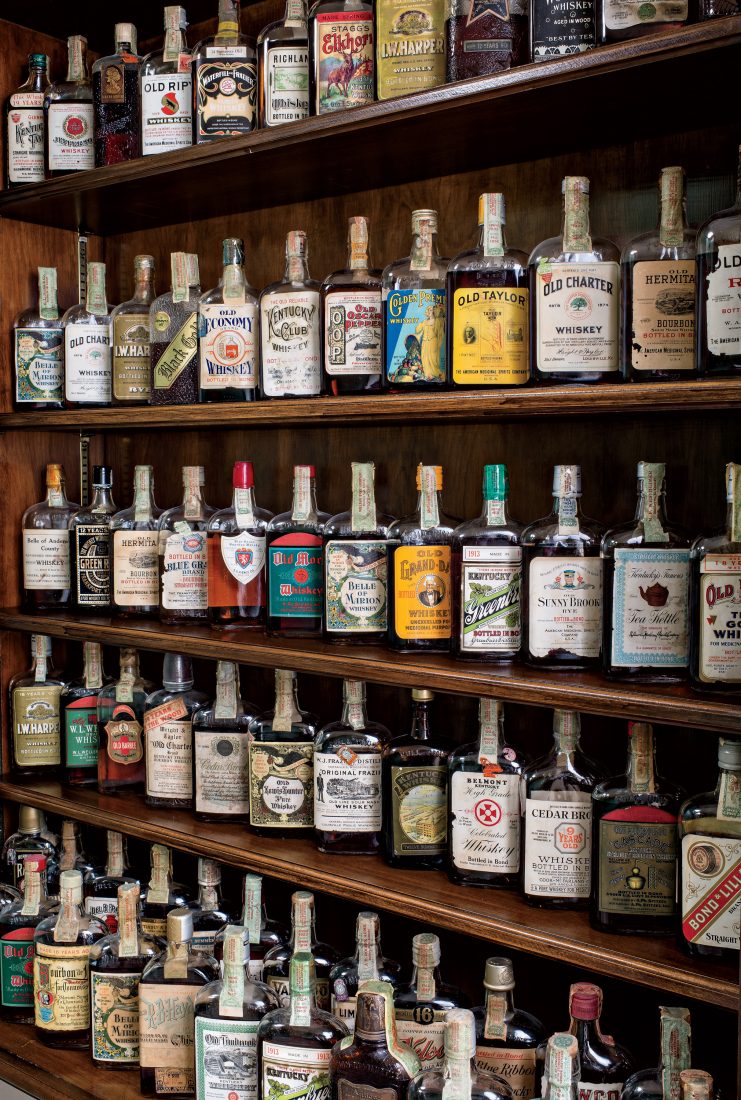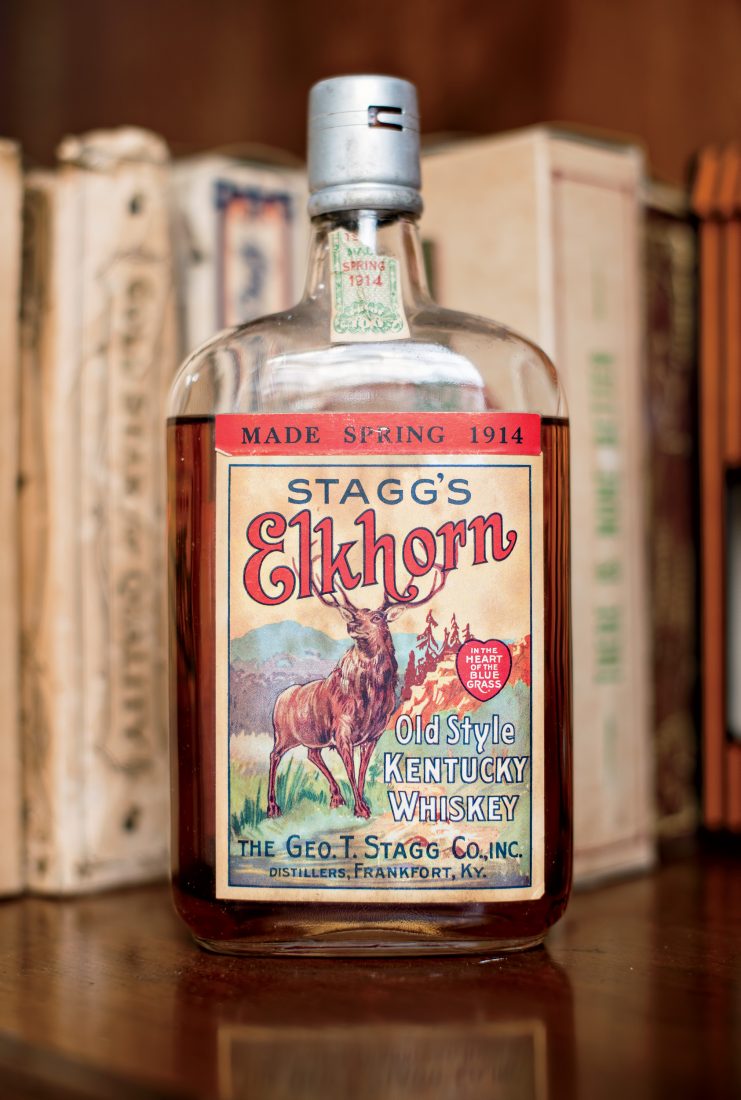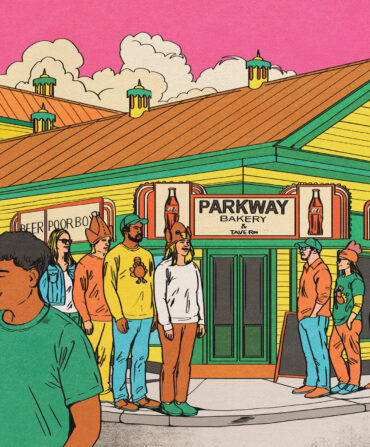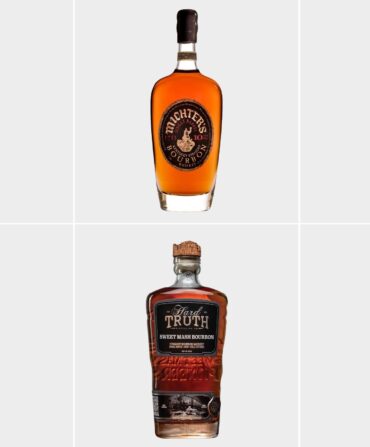Today, the vast majority of bottled bourbon comes from one of eight large distilleries. It wasn’t always so. Before Prohibition, more than 250 distilleries dotted the Kentucky countryside. These weren’t backwoods stills but sizable operations that earned the Bluegrass State its reputation for barrel-aged corn liquor of unusual quality, staying power, and grace. Fans worldwide now celebrate Kentucky whiskey’s modern resurgence, but the old stuff, if you can find it, tells the story of bottled bourbon’s first heyday, grand while it lasted but cut short.

Photo: Andrew Hyslop
Zoeller enjoys a drink.
These Prohibition-era bottles emerge periodically from their hiding spots in attics and storm cellars, places where they have spent nearly a century as fugitives from what was once the law of the land. When they do, Chet Zoeller is waiting to pounce. A septuagenarian Kentucky native, Zoeller knows as much about the history of bourbon whiskey as any man alive, and he has made it his mission to lay his hands on one bottle from each notable pre-Prohibition distiller. He’s up to 125, about halfway there. Among his prizes: a rare bottle of the once popular Green River whiskey from Daviess County, and an Old Oscar Pepper with its distinctive “OOP” on the label. While the latter brand is lost to history, the distillery itself remains in operation as Woodford Reserve.
“It’s a hobby that if you think about it doesn’t make a lot of sense,” Zoeller says. “You pay a pretty good sum for bottles that you’re never going to drink.”
He first started collecting in the late nineties, making use of eBay’s now defunct liquor listings for rare bottles. Today, he relies mostly on word of mouth. “A couple of weeks ago I had a fellow call with a couple of bottles he found hidden behind the books in an old family bookcase,” he says. “Some people find them in the walls.”
Zoeller grew up in Louisville’s South End, a place where he could simultaneously hear the races being called at Churchill Downs and inhale the aromas of vanilla, caramel, smoke, and leather emanating from the nearby whiskey warehouses. The experience left him with a lifelong passion for bourbon. In 1998, he decided to pursue that passion full-time, bottling his own small-batch whiskey with his son Trey under the name Jefferson’s Reserve. As the brand got its legs, Zoeller left the day-to-day operation to Trey and turned his energies to researching the origins of bourbon making in his home state, authoring the 2009 book Bourbon in Kentucky.
Photo: Andrew Hyslop
Stagg’s Elkhorn, distilled near Frankfort.
1 of 5
Photo: Andrew Hyslop
2 of 5
Photo: Andrew Hyslop
More century-old brands.
3 of 5
Photo: Andrew Hyslop
Good Spirits
A rare bottle of Green River.
4 of 5
Photo: Andrew Hyslop
Hooch Hutch
Chet Zoeller’s stockpile of Prohibition-era bourbon bottles, on display in his Louisville home.
5 of 5
As Zoeller tells the story, consumers during the 1800s bought bourbon directly from saloon keepers who tapped their barrels straight into customers’ jugs. The mass production of glass bottles didn’t occur until the early twentieth century, so when Prohibition became law, in 1919, much of Kentucky’s finest was still in cask. “Believe it or not, the vast majority of old whiskey bottles out there came into being during Prohibition,” Zoeller explains. “While you couldn’t make or sell alcohol in the United States, there were a few exceptions, notably doctors who could prescribe it as a ‘medicinal spirit.’” Bourbon bottled during Prohibition was sealed with a federal tax stamp and then made its way to “patients” or into hiding.
While many of the contemporary brands are excellent and have fueled a newfound taste for high-end brown spirits, Zoeller still sees something special in the bourbon that was. “You had a much greater spectrum of flavors and taste profiles back then,” he says. A number of these old bourbons began their initial fermentation with the now all-but-obsolete “sweet mash” method, where 100 percent of the grain is inoculated with a fresh yeast culture, creating a wide degree of variance.
Unlike wine, which collectors often cellar until the vintage reaches peak expression, distilled spirits do their aging in the barrel. Once transferred to an airtight glass bottle, they remain inert, a genie poised to spring after a day, a year, or a century. Therein lies the dilemma of whiskey collectors: Drink, or save?
It’s certainly not unheard of for collectors to crack a bottle now and then, particularly one that may be only forty or fifty years old. Louisville chef Edward Lee, a bourbon aficionado in his own right, says he opened a 1971 bottle of Old Fitzgerald “by mistake on purpose,” tinkering with the hammered steel cup attached to its closure until the seal broke. He offered swigs to bourbon cognoscenti around town; master distiller Julian Van Winkle III proclaimed it one of the best he had ever tasted.
Is Zoeller ever tempted to let one of his genies out of the bottle and take a century-old sip? He considers the question before concluding with a sigh, “I hate to open those things. I might pay three or four hundred dollars for one of them, but once you crack that federal tax stamp, it’s worth nothing.” Then he remembers a pour of Old Forester bottled nearly seventy years ago that a friend once gave to him. “It tasted chocolaty, unlike any bourbon I’ve ever had,” he says. “It was incredible.”












